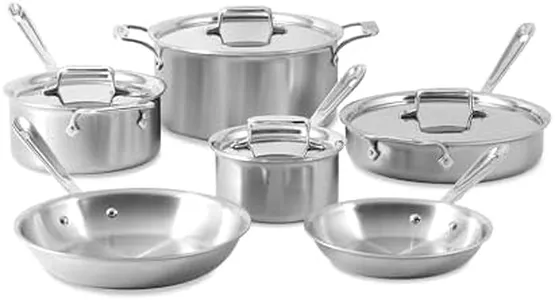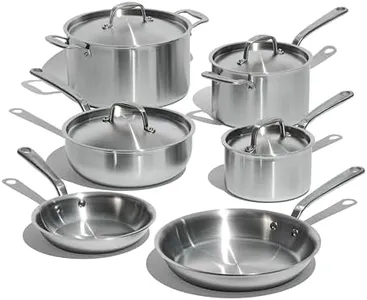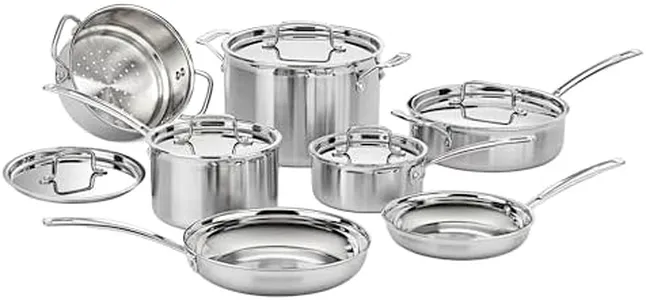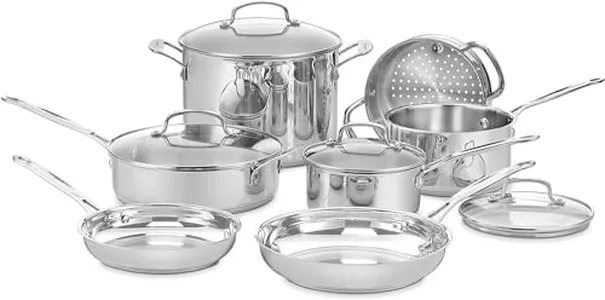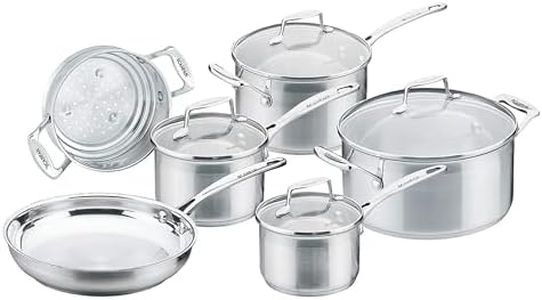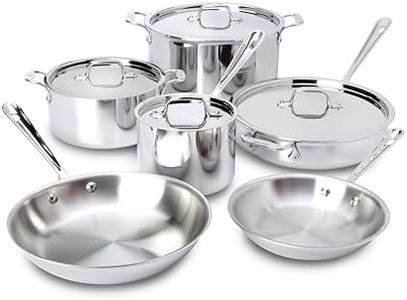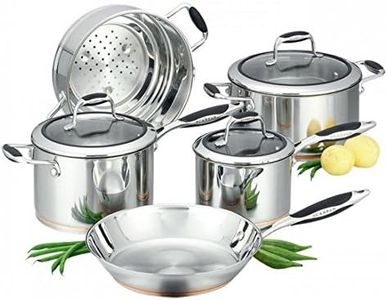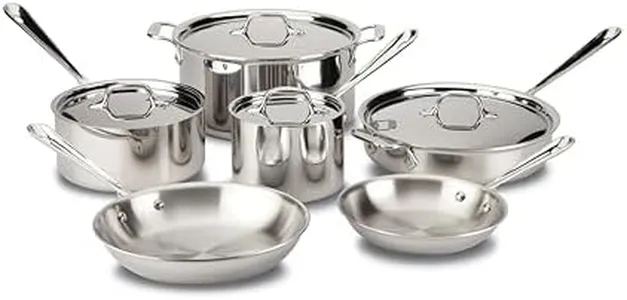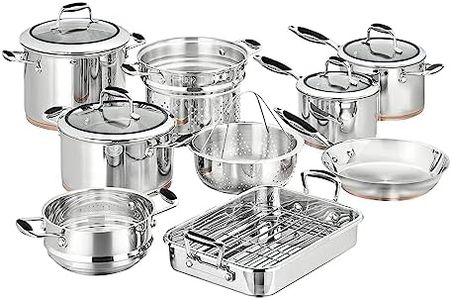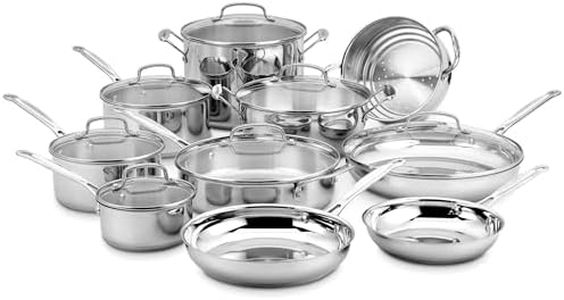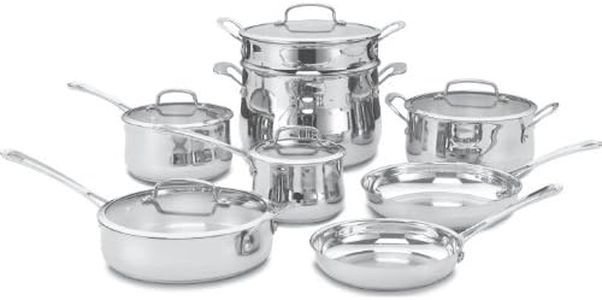We Use CookiesWe use cookies to enhance the security, performance,
functionality and for analytical and promotional activities. By continuing to browse this site you
are agreeing to our privacy policy
10 Best Stainless Steel Cookware Sets
From leading brands and best sellers available on the web.Buying Guide for the Best Stainless Steel Cookware Sets
Shopping for stainless steel cookware sets can feel overwhelming due to the many options available, but understanding your cooking habits and preferences will help you narrow down your choices. Stainless steel cookware is popular for its durability, resistance to rust and staining, and non-reactive nature, making it suitable for a variety of cooking tasks. It's important to look for sets that fit your cooking style and the types of dishes you like to prepare, as not every set will be right for every kitchen. Consider the essential features that impact usability, performance, and ease of maintenance to find a set that matches your needs.Material CompositionMaterial composition in stainless steel cookware refers to the types of metals used in the construction. While all stainless steel sets feature stainless steel as the exterior, many have inner layers (most often aluminum or copper) for better heat conduction. The quality and number of these layers affect how evenly the pots and pans heat and how well they retain heat. Basic sets may have just a stainless steel layer, making them less efficient for delicate tasks, while higher-end sets use multi-layer (clad) construction for superior performance. If you often cook dishes that require precise temperature control, opt for multi-ply cookware. If you mainly need straightforward boiling or steaming, single-ply options will suffice.
Number and Type of PiecesThe number and type of pieces in a cookware set determine what you can cook and how flexibly you can use the set in different recipes. Sets can range from bare-minimums like a saucepan and skillet to extensive collections including specialized pots and utensils. More pieces are better if you enjoy trying a wide range of recipes; however, if you usually cook simple meals, a basic set with just a few key pots and pans will be easier to store and more practical.
Cookware Weight and ThicknessThe weight and thickness of stainless steel cookware are tied to how sturdy and effective the pans are. Heavier cookware tends to distribute heat more evenly, which helps prevent burning. Thin cookware heats up quickly but can have hot spots and may warp over time. Light to medium-weight pans are easier to handle, especially for those with less physical strength or who need to move pans around often. For most users, medium-thick cookware offers a good balance of manageability and heat performance.
Handle Construction and ComfortThe handles on cookware sets should feel sturdy, remain cool during cooking, and offer a good grip. Handles that are riveted or welded securely are less likely to loosen over time. Some are designed with ergonomic shapes or heat-resistant materials. If you often move pans between stovetop and oven, or carry heavy pots, comfortable, heat-resistant handles are essential. For basic cooking, standard handles may suffice, but it's important to test how they feel in your hand.
Oven and Dishwasher CompatibilityOven and dishwasher compatibility expands how and where you can use and clean your cookware. Oven-safe cookware allows you to start a dish on the stovetop and finish it in the oven, while dishwasher-safe pots and pans simplify cleanup. Most stainless steel sets are oven- and dishwasher-safe, but always check limits on temperature and detergents. If you regularly bake or want easy cleaning, these features will be important. Otherwise, hand-washing and stovetop use may be all you need.
Lid Material and FitThe lids that come with cookware sets are usually stainless steel or glass. Stainless steel lids are more durable and oven-safe at higher temperatures, while glass lids let you watch your food as it cooks. A tight fit is crucial for steam retention and efficient cooking. Choose glass lids if you like to monitor your dishes without lifting the lid, or stainless steel lids for durability and high-temperature use.
